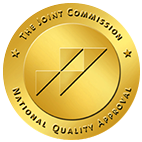Understanding Complex PTSD
CPTSD Self-Test

Take Our CPTSD Self-Test
Complex Post-Traumatic Stress Disorder is sometimes called Enduring Personality Change After Catastrophic Experience (EPCACE), Disorders of Extreme Stress Not Otherwise Specified (DESNOS). It can also be shortened to Complex PTSD, C-PTSD, or CPTSD. C-PTSD is a psychiatric condition closely related to Post-Traumatic Stress Disorder (PTSD). Like PTSD, C-PTSD is an anxiety disorder that may develop after exposure to an extremely disturbing event.
When the underlying trauma is repeated or ongoing, behavioral health professionals may diagnose C-PTSD. Complex post-traumatic stress disorder shares many of the symptoms of PTSD. However, there are additional symptoms that are unique to C-PTSD. We will explain how C-PTSD differs from PTSD, how C-PTSD is diagnosed, what its symptoms are, and how it is treated.
This online screening is not a diagnostic tool. Only a trained medical professional, like a doctor or behavioral health professional, can help you determine the best treatment for you.
Causes of PTSD
Post-traumatic stress disorder was first recognized as a condition affecting war veterans. Upon returning to their civilian life, many soldiers began to display a set of symptoms that became known as PTSD. These symptoms were especially apparent in soldiers who had experienced the atrocities of combat firsthand. Some examples include soldiers who were taken as prisoners of war or lived in war-torn environments.
Psychologists now understand that PTSD can be caused not only by active military duty. PTSD1 but by a wide variety of disturbing, devastating, or disorienting events, for instance:
- Natural disasters such as wildfires, earthquakes, or hurricanes
- Serious bicycle or automobile accidents
- Assault or mugging
- The death of a loved one
- Being threatened with bodily harm or death
- Traumatic childbirth experiences
- Serious health problems
- Experiencing a terrorist attack
- Domestic or childhood abuse
- Bullying or sexual harassment
- Racial trauma or hate-crimes
Symptoms of PTSD
The symptoms of post-traumatic stress disorder fall into three main categories:
- Reliving the trauma
- Avoidance of trauma-related people, places, or things
- Hypervigilance

Re-Experiencing the Traumatic Event
A person who has PTSD may have nightmares, flashbacks, or intensely disturbing and intrusive memories of the original trauma. A war veteran, for instance, may have nightmares of witnessing the violent death of his brother-in-arms.

Avoiding Trauma-Related Situations
Someone with PTSD might go out of their way to avoid activities or situations that remind them of the traumatic event. Alternatively, they may keep themselves super-busy to avoid even thinking about the trauma.
A survivor of a horrific car accident may avoid situations that remind them of the event. For instance, they may avoid walking, biking, or driving past the intersection where the accident occurred.

Hypervigilance
A person with PTSD may become hypervigilant, paying excessive attention to potential dangers as though there was a current threat. This is true even when the likelihood of such threats materializing is very low. This may include having a hard time concentrating on other things and trouble falling asleep.
They may also exhibit the related symptom of hyperarousal. This is also known as a startle response. Meaning that the person is jittery and on edge, perpetually on alert, and easily startled. Someone who experienced sexual assault may flinch and recoil fearfully when touched on the shoulder by a friend.

Other PTSD Symptoms
Along with these three primary symptom clusters, someone with PTSD may exhibit somatic symptoms unrelated to any medical condition. They may, for instance, feel nauseous or dizzy when reminded of the original trauma.
There may also be significant changes in how the person feels about themselves and others. They may also experience changes in their beliefs about the world. These kinds of symptoms (as discussed below) are now more commonly associated with complex post-traumatic stress disorder (C-PTSD).
How PTSD Affects the Nervous System
Post-traumatic stress disorder is often spoken of in terms of its behavioral and psychological symptoms. But such symptoms are often interwoven with physiological changes in how the nervous system functions.
It’s natural for stressful events to activate the body’s sympathetic nervous system, with its “fight or flight or freeze” responses. Once the danger has passed, there should be a return to a more regulated mindset. This means the person will return to a more neutral and relaxed “rest and digest” mode of the parasympathetic nervous system (PSNS).
A normally regulated nervous system can process the stressful situation and then return to baseline functioning when the threat has passed. However, the nervous system works differently for someone who has experienced trauma—because traumatic events can damage its self-regulating capacity.
When this happens, the nervous system becomes dysregulated. It may, for instance, get stuck in its sympathetic “fight or flight” mode. In such a case, the person is perpetually overstimulated, experiencing anxiety, restlessness, anger, panic, and/or hyperactivity. They are unable to find and maintain a sense of calm, ease, and relaxation.
For other people, the nervous system may get stuck in a frozen or “off” mode—resulting in fatigue, lethargy, or depression.
People suffering from PTSD or c-PTSD may have nervous systems that are stuck in the hyperactive or collapsed mode. They may experience being in this mode for an extended period of time. This time can last for weeks, months, years, or decades after the traumatizing event.
PTSD vs. Complex PTSD
What’s the difference between post-traumatic stress disorder (PTSD) and complex post-traumatic stress disorder (c-PTSD)?
The two conditions share many symptoms and are treated using similar healing modalities. The difference lies in the severity and continuity of the traumatizing event.
- Standard PTSD is related to a single traumatic event.
- Complex PTSD is related to a series of traumatic events. These events occur over a period of months or years or to one prolonged event.
The symptoms of C-PTSD usually include those of PTSD. However, there is an additional set of symptoms that are related to the increased severity and chronic nature of the trauma. The symptoms of complex PTSD tend to be similar but more extreme and enduring than those of PTSD.
Those who repeatedly experience a traumatic situation may be diagnosed with complex PTSD. Examples of repeated experiences include ongoing wartime torture, human trafficking, child neglect, sexual abuse, or domestic violence.
What is Complex PTSD?
Complex post-traumatic stress disorder is a type of PTSD diagnosed in those who have experienced ongoing or repeated trauma. The addition of this diagnosis is based on the understanding that certain kinds of traumas are more damaging than others.
What Makes a Trauma Complex?
The trauma of C-PTSD is “complex” by virtue of its severity and its ongoing nature. It can also be complex because is being perpetrated by someone the victim inherently trusts. These individuals may include a parent, teacher, caregiver, coach, or spiritual leader.
C-PTSD is caused by severe, repetitive abuse over months, years, or decades. The abuse often occurs at vulnerable times in a person’s life. Such as early childhood or adolescence, and can create lifelong challenges.
A person is likely to be diagnosed with c-PTSD when one or more of these conditions are met:
- The trauma was experienced over an extended time period
- The trauma occurred during childhood or adolescence
- The violation was perpetrated by someone they trusted
- The traumatized person was alone during the event
- They still have regular contact with the perpetrator
- They still live at or close to the place where the trauma occurred
Symptoms of Complex PTSD
The symptoms of Complex Post-Traumatic Stress Disorder include the three primary symptom clusters of standard PTSD. These are:
- Re-experiencing
- Avoidance
- Hypervigilance
In addition, the complex trauma of C-PTSD creates more complex symptoms in three additional domains:
- Emotional Regulation
- Self-Identity
- Relational Capacities

Lack of Emotional Regulation
In C-PTSD, problems with emotional regulation mirror the nervous system dysregulation discussed above.
Symptoms in this category have to do with the individual succumbing to uncontrollable emotional outbursts. The person suffering from C-PTSD feels overwhelmed emotions or out of control. This may result in explosive anger, heavy sadness, anxiety, panic, or hyperactivity.
They don’t know how to skillfully navigate these challenging emotions. And they have trouble calming down, relaxing, and letting the emotional waves settle.

Negative/Distorted Self-Concept
Symptoms related to negative self-perception and distorted sense of identity in those diagnosed with C-PTSD may include:
- Believing oneself to be worthless or a failure.
- Overwhelming guilt or shame related to the past trauma. To the point of feeling completely different from or inferior to other people.
- Life and other people seem distorted and unreal.
- Dissociation: a sense of disconnection from physical sensations and/or emotions.
- Detachment from the trauma.
- Depersonalization: disconnection from one's personal identity and experience.

Relationship Difficulties
Relationship difficulties associated with C-PTSD include:
- Avoidance of relationships.
- Cutting oneself off from friends and family.
- Difficulty maintaining relationships.
- Strong distrust of the world and people.
- A feeling of not knowing how to interact with others.
- Seeking relationships with people who harm/abuse them because it feels familiar.
- Having a distorted perception of the abuser.
- Becoming preoccupied with their relationship with the abuser.
- A preoccupation with revenge.

Other C-PTSD Symptoms
The symptoms of C-PTSD may also include:
- Periods of losing attention and concentration.
- Forgetting the traumatic event.
- Physical symptoms such as dizziness, headaches, stomach aches, or chest pains.
- Loss of meaning, and disconnection from one's moral, ethical, or spiritual compass.
- Erosion and distrust of previous belief systems.
- A sense of despair and hopelessness about the world.
- Having a distorted perception of the abuser.
- Extremely destructive or risky behavior, such as alcohol abuse, drug addiction, or self-harm.
- Suicidal thoughts or behavior.
Risk Factors for Complex PTSD
What are the risk factors for developing complex post-traumatic stress disorder?
While anyone can develop C-PTSD, certain people are more likely to develop it than others. These risk factors include:
- An existing behavioral health condition: e.g., underlying mental illness, such as anxiety or depression, or a family history of mental illness.
- Inherited personality traits or temperament.
- Neurological factors: how a person's brain regulates hormones and neurochemicals, especially in response to stress.
- Lifestyle factors, such as not having a strong support system or having a dangerous job.
- Life stressors, such as recent family, financial, or relationship challenges.
- Having experienced previous trauma.
How Is Complex PTSD Diagnosed?
The Diagnostic and Statistical Manual of Mental Disorders, 5th edition (DSM-5) is used by psychiatrists and psychologists to diagnose mental disorders. PTSD is listed in the DSM-5. However, complex PTSD is not acknowledged as a separate condition and therefore isn’t officially recognized by the American Psychiatric Association (APA).
However, there is another listing of mental disorders that are compiled by the World Health Organization. This is called the International Statistical Classification of Diseases and Related Health Problems, 11th edition (ICD-11).
In 2018, the World Health Organization made the decision to include complex PTSD as its own separate diagnosis. In the ICD-11, complex post-traumatic stress disorder is identified with symptoms in the three domains outlined above:
- Emotional Regulation
- Self-Identity
- Relational Capacities
In the World Health Organization manual of health problems, C-PTSD is defined as a disorder similar to PTSD. However, there are also additional symptoms included in C-PTSD. These symptoms include the three “disturbances in self-organization.”
The ICD-11 states that a behavioral health practitioner must determine that an individual meets all the criteria for traditional PTSD. This diagnosis must be made before diagnosing complex PTSD.
They must show problems with the following life skills:
- Self-regulation
- Low self-esteem
- A sense of shame or guilt related to past trauma
- Problems maintaining relationships
Before the WHO updated its diagnostic criteria to include c-PTSD, clinicians would often diagnose people experiencing symptoms with other disorders. These disorders included DESNOS (disorders of extreme stress not otherwise specified) or BPD (borderline personality disorder).
Treatment for Complex PTSD
Treatment protocols for PTSD and c-PTSD conditions are quite similar. The primary treatments for PTSD and C-PTSD are psychological therapy and medication.
For an individual diagnosed with complex PTSD, psychological therapies are generally the first form of treatment prescribed. Trauma-focused psychological treatment may utilize modalities such as:
- Trauma-focused cognitive-behavioral therapy (CBT).
- Eye movement desensitization and reprocessing (EMDR).
- Dialectical behavioral therapy (DBT).
- Mindfulness-based cognitive therapy (MBCT).
- Somatic Experiencing
- Body-Oriented Psychotherapy
- Restorative Yoga
For those who are experiencing particularly severe or persistent c-PTSD, a combination of psychological therapy and medication may be prescribed. The type of medication often prescribed for C-PTSD is a type of antidepressant known as selective serotonin reuptake inhibitors (SSRIs).
It’s not surprising that complex PTSD often requires a longer period of treatment. And treatment requires a greater variety of modalities, than traditional PTSD.
Tools for Coping with Complex PTSD
Treatment for C-PTSD can take time. Therefore, it is important to learn how to skillfully manage the symptoms of the disorder, along the way. Some tips for supporting the healing process include:
- Ask for and receive support—from friends, family members, or support groups.
- Practice mindfulness: MBSR or Unified Mindfulness or Effortless Mindfulness are great resources.
- Keep a journal—of symptoms, emotional responses, and insights to share with a therapist.
- Read inspiring self-help books or memoirs of others who have recovered from C-PTSD.
Tools for Calming the Nervous System
A skilled therapist can help a client who is recovering from c-PTSD learn to activate their own parasympathetic nervous system. An activated PSNS helps relieve several common symptoms associated with PTSD and c-PTSD.
Anything that one finds calming, reassuring, and relaxing can be a way to access the parasympathetic nervous system. Activities that can initiate this calming response in the body include:
- Meditation: sitting quietly and/or following the breath.
- Progressive relaxation: tensing and releasing muscle groups.
- Practicing yoga, tai-chi, or Feldenkrais.
- Deep slow breathing, with an extended exhalation.
- Repeating a word or phrase (out loud or internally) that one finds peaceful or relaxing.
- Gentle exercise: swimming, biking, hiking, gardening.
- Spending time in nature: a park, garden, beach, or forest path.
- Playing with small children or pets.
- Receiving a therapeutic massage.
- Repeating a soothing prayer or chant.
Self-Care Techniques to Help Resolve C-PTSD
Intelligent self-care rituals can help those recovering from c-PTSD learn to release stress. Some additional tools for accessing the calming effects of the parasympathetic nervous system include:
- Enjoying mindful breathing. Mindful breathing allows perceptions and emotional responses to be fresh and authentic, rather than colonized by old habitual anxiety/panic reactions.
- Focusing on one thing at a time, rather than becoming overwhelmed with the attempt to multitask.
- Visualizing or imagining oneself in a safe, beautiful, nourishing, and peaceful place.
- Choosing relationships that are safe. Most people find comfort in healthy connections with others. So friends and family members whose presence is comforting, calming, and secure, can help activate the parasympathetic nervous system.
- Connecting with a trauma-focused therapist who understands PTSD and C-PTSD. A skilled behavioral health professional can help their client identify what specific tools work best to calm their nervous system. They can also help their clients learn to and support emotional regulation.
Getting Help
Traumatic events—those that radically disrupt one’s life—can be very challenging to come to terms with. Their physical, mental, and emotional effects can be deep-seated and may contribute to post-traumatic stress disorder.
The good news is that it is possible for both PTSD and C-PTSD to be successfully treated. These disorders can be treated even many years after the traumatic event happened. It is never too late to ask for and receive support for healing!
At New Method Wellness, clients are able to focus on their healing in a peaceful and rejuvenating environment. Our treatment center values community, balance, fulfillment, and integrity. Our experienced wellness team provides a wide range of holistic therapies and evidence-based treatments for PTSD and C-PTSD. We aim to nourish, support, and inspire the unique healing journey of each individual.
Related Topics
Our Services
Clinically Reviewed By:
Deanna J. Crosby, M.A., LMFT, LAADC, Psy.D. (C)
Deanna Crosby is a Licensed Marriage and Family Therapist (LMFT) with over 20 years of experience working with clients in recovery. Her expertise has catapulted her into the spotlight. Featured on several episodes of the Dr. Phil Show as a behavioral health expert, DeAnna is a routine contributor for NBC News, The Huffington Post, Elle Magazine, MSN, Fox News, Yahoo, Glamour, Today, and several other prominent media outlets.
After receiving her bachelor’s degree from the University of California in Irvine, Crosby did postgraduate work at Centaur University where she graduated at the top of her class with a CAADAC certification in Centaur’s chemical dependency program. Following her time at Centaur, Crosby received her Master of Counseling Psychology degree from Pacifica Graduate Institute, where she also attained a Doctoral Degree in Depth Psychology.
TAKE THE FIRST STEP
From all of us at New Method Wellness co-occurring treatment center, we wish you peace and serenity in knowing that you or your loved one will get the necessary help.
ACCREDITED BY:


